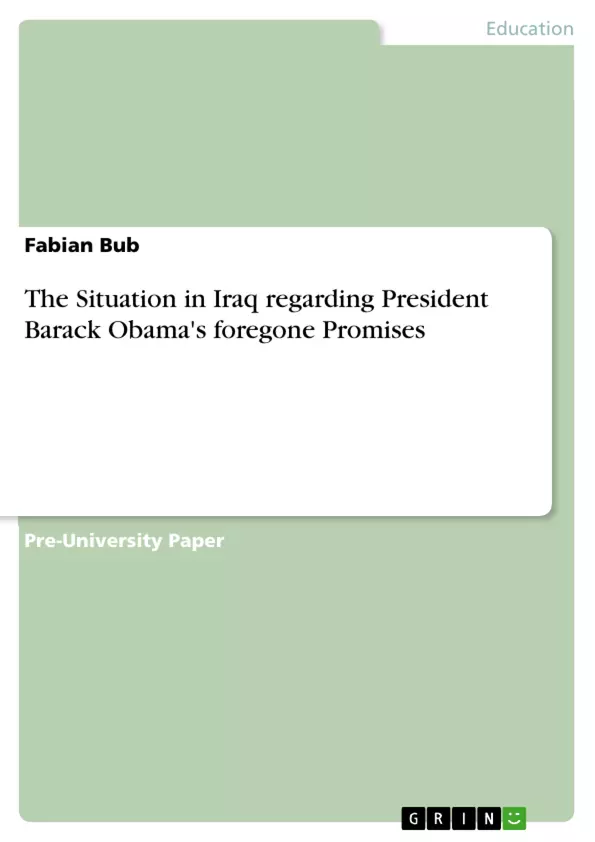In the following paper the situation in Iraq with regard to the U.S. drawback, which had begun in the first weeks of March 2009, will be investigated. Fundamental for this is President Barack Obama’s strategy he presented shortly after he became president in 2009. Until today there are several theories why the U.S. invaded Iraq on March 22, 2003 under President George W. Bush, although there is an official statement by him. The rationale for it was to abolish “a regime that developed and used weapons of mass de- struction that harbored and supported terrorists, committed outrageous human rights abuses, and defied the just demands of the United Nations and the world.” Barack Obama inherited the occupation in a way and was also responsible for the drawback, since Mr. Bush said “setting a deadline for withdrawal is setting a date for failure, and that would be irresponsible.” Was George W. Bush right or did Barack Obama fail in order to keep his promise?
Inhaltsverzeichnis (Table of Contents)
- Preface
- What did Obama promise in 2009?
- How did President Obama proceed in order to keep his promises?
- Promise No.1: The withdrawal of all U.S. troops from Iraq until the end of 2011
- Promise No.2: Diplomacy and a peaceful, prosperous Iraq
- Promise No.3: US Engagement across the Middle East in order to strengthen relations between Iraq and neighbouring states.
- Promise No.4: Better veterans' health care and counselling for their families.
- Conclusion and personal statement
- Material
- References
Zielsetzung und Themenschwerpunkte (Objectives and Key Themes)
This paper examines President Barack Obama's strategy for withdrawing U.S. troops from Iraq, implemented shortly after he took office in 2009. The paper explores the promises Obama made regarding the withdrawal and assesses how effectively these promises were fulfilled in light of the evolving security situation in Iraq.
- The withdrawal of U.S. troops from Iraq
- The role of diplomacy in achieving a peaceful and prosperous Iraq
- The importance of regional cooperation in stabilizing Iraq
- The provision of better health care and counseling for veterans and their families
- The challenges of transitioning Iraq to a self-reliant and secure nation
Zusammenfassung der Kapitel (Chapter Summaries)
- Preface: This section introduces the paper's focus on the U.S. withdrawal from Iraq and provides context by highlighting President Obama's strategy in relation to the legacy of the Iraq War under President George W. Bush.
- What did Obama promise in 2009?: This chapter details Obama's three-step plan for withdrawing U.S. troops from Iraq, including the timeline for troop withdrawal, the role of diplomacy in stabilizing Iraq, and the importance of regional cooperation. It also emphasizes the commitment to providing better veterans' health care and social services for military families.
- How did President Obama proceed in order to keep his promises?: This chapter examines the implementation of Obama's strategy, focusing on the withdrawal of U.S. troops from Iraq. It highlights the challenges faced, such as ongoing violence and security threats, and assesses the effectiveness of the withdrawal process.
Schlüsselwörter (Keywords)
The key terms and concepts explored in this paper include: U.S. troop withdrawal, Iraq War, Obama administration, diplomacy, regional cooperation, veterans' health care, security threats, and the transition to a self-reliant Iraq.
- Quote paper
- Fabian Bub (Author), 2014, The Situation in Iraq regarding President Barack Obama's foregone Promises, Munich, GRIN Verlag, https://www.grin.com/document/295335



